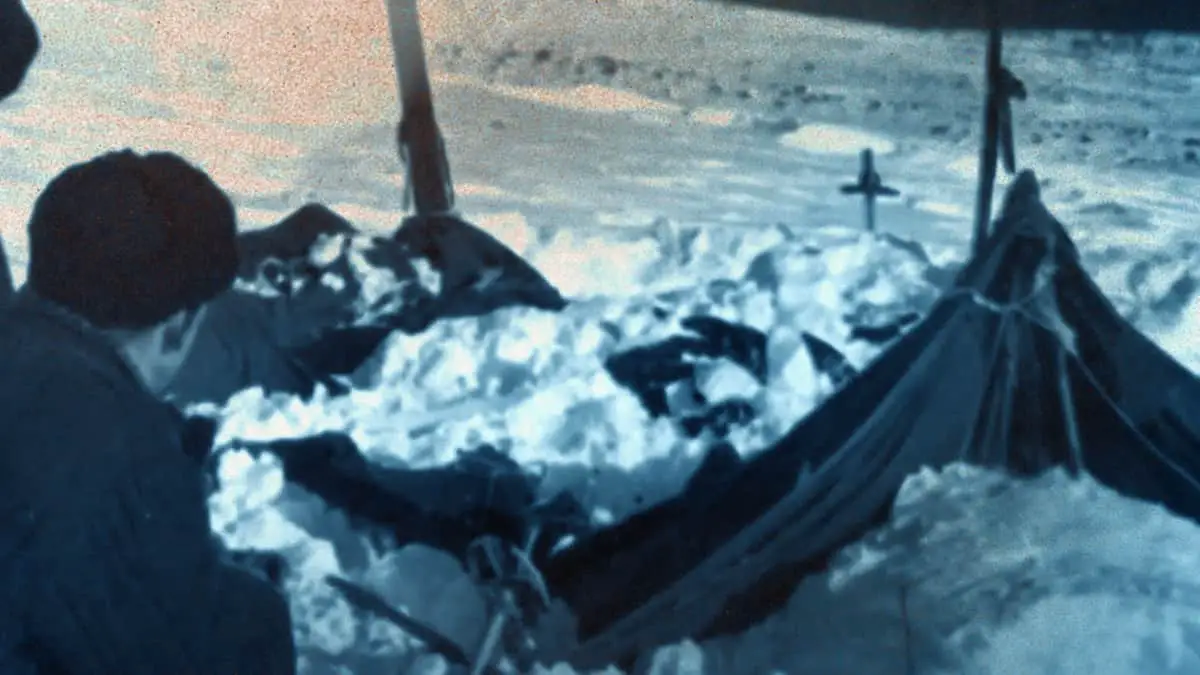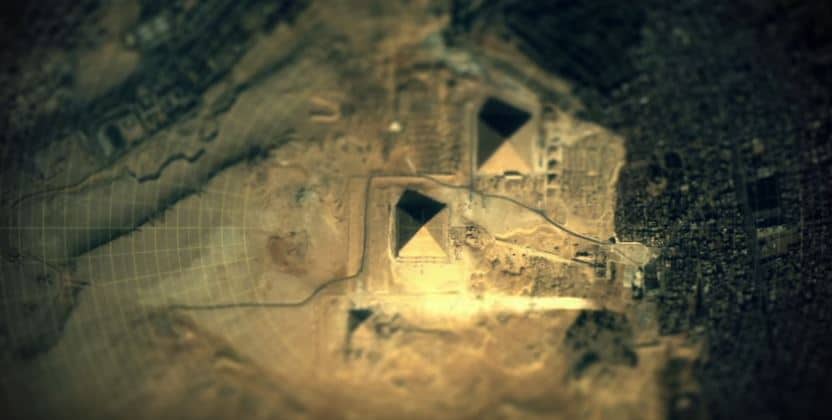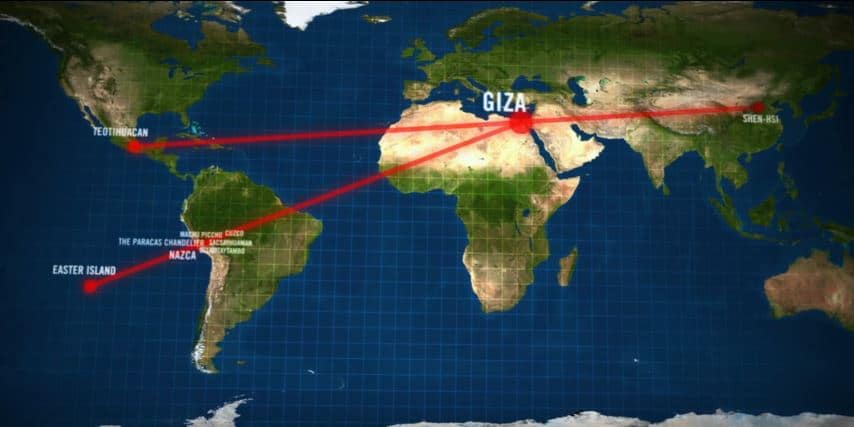

Russia’s Dyatlov Pass Incident is one of the creepiest, most mysterious true stories ever told.
In January 1959, during the height of the Cold War, nine young Urals Polytechnic Institute students in their 20s and 30s went hiking in the Ural Mountains. All were experienced hikers and skiers, but none were prepared for what was about to happen.
Their goal was to reach the mountain Gora Otorten. It was to be a 200-mile adventure in all.
On February 1, the group set up their tent on the slopes of the Kholat Syakhl. In the Indigenous Mansi people’s language, the words roughly translate to “Dead Mountain.”
After weeks, parents and the university started looking for them, but no one would see them alive again. Diaries and cameral rolls left behind in the tent reveal clues about their final moments.
Unknown Compelling Force
Weeks later, investigators find their tent flattened and their bodies scattered widely in the surrounding area. Sadly, the seven men and two women all suffered a forever unexplained end.
Official list the cause of death as “an unknown compelling force” and “the spontaneous power of nature.”
It was as if some of them had been struck with the force of a car. Otherwise, there weren’t any outward signs of violence. Notably, only their footprints were found, and no signs of animals or intruders. The spacing of the footprints indicated they were walking at a normal pace.
A Search for Months
It took over two months to find all the hikers. First, two bodies were found near a cedar tree, naked apart from underwear, with temperatures as low as -40 degrees. Some of the bodies were wearing pieces of clothing belonging to other hikers.
Days later, more bodies were found, in varying stages of undress. Even stranger, they suffered from unexplainable injuries, internal fractures, broken ribs, and discolored skin. Finally, after two months and warming temperatures, searchers found the last of the bodies, buried beneath 13 feet of snow.
Mysterious Clues
The student who found the tent said it “was half torn down and covered with snow. It was empty, and all the group’s belongings and shoes had been left behind.”
A camping stove was still unassembled as if they had never been able to use it.
An unknown force caused massive chest and skull fractures. Two of the bodies were missing their eyes, and one had no tongue or lips. For some reason, there was radioactive material on some of the clothes.
At the funerals, attendants noticed their loved ones’ skin had turned orange, and their hair was gray.
Wild Theories Abound
Since then, nobody has explained what killed the hikers, with theories varying from:
- Attack by extraterrestrials
- Sudden small avalanche
- Violent Katabatic wind
- Secret KGB weapons testing
- Death by the Yeti
- A murder cover-up
In 2019, on the 60th anniversary of the deaths, Expedition Unknown shared the story. Host Josh Gates discusses a document showing Soviet investigators may have known about the hikers’ deaths by February 6. But supposedly, they didn’t find the tent until February 26?
According to National Geographic, “Soviet bureaucracy kept the case quiet.” Recently, Russian authorities reopened the investigation. (see below)
See the clip from Expedition Unkown below:
Flying Orbs and Aircraft
Witnesses who were mountain climbers claimed to see orange orbs flying in the area the night of the incident. Area residents, meteorologists, and soldiers confirmed the orb sightings.
Some victims’ relatives believed some unknown military testing could have caused the deaths. A June 29, 2020 petition to the prosecutor general Dyatlov Case, some believed the deaths were due to “negligence on behalf of the rocket engineers who made a mistake in the design of the hull or engine of the aircraft, unsuccessful launch, and sabotage.”
Official Cause: Avalanche and Poor Visibility
After reopening the case in 2019, Russian authorities once again ruled the cause for the mysterious deaths was an avalanche and poor visibility. The avalanche “forced the group out of their tents to shelter under a nearby ridge. Lack of visibility then prevented their return.”
“It was a heroic struggle. There was no panic. But they had no chance to save themselves under the circumstances,” said Andrey Kuryakov. “The version (of the events) about the avalanche has found its full confirmation, but it was not the only cause of their death,” he continued.
After the avalanche forced them to leave the tent, they huddled in a nearby mountain ridge. From there, some of the group tried to return to the tent but got lost and froze to death, according to the official report by Andrey Kuryakov, deputy head of the regional prosecutor’s office.
However, many questions remain, including why they were in a state of undress and what caused the massive internal injuries? If it was an avalanche, the typical death is due to asphyxiation.
Although an avalanche supposedly hit, the tent was near the surface, sticking out of the snow.
Further, there was no sign of an avalanche at the location. According to Heavy, “in over 100 expeditions to the region since the incident, no one has reported conditions creating an avalanche.” The slope seemed too mild to have been the site of an avalanche.
See more from House of History:
Computer Models Suggest Freak Avalanche
Today, after 62 years, scientists offer new explanations for the Dyatlov Pass Incident. Most recently, National Geographic suggests science has the answer after using computer models to run avalanche simulations. Strangely, the models use animation from the movie Frozen and car crash experiments.
Two Swiss researchers used the film’s snow animation code, avalanche simulation models, and car crash impact models. They found that a small avalanche merely 16 feet across could have caused the traumatic injuries seen in the victims. It would be a very rare perfect storm, at an “exact spot, at that exact moment, during that one very wintery night.”
“The researchers’ computer models demonstrated that a 16-foot-long block of hefty snow could, in this unique situation, handily break the ribs and skulls of people sleeping on a rigid bed. These injuries would have been severe, but not fatal—at least not immediately,” reported National Geographic.
Thus, a swift-moving slab of snow hit the campers as they slept. Three people were severely injured in the avalanche while the others tried to move them to safety. Lost in the dark, they had no chance to survive.
Further Explanations
Further explanations suggest the hiker’s state of undress may have been caused by paradoxical undressing.
Clothing left with radioactive traces may have been caused by camping lanterns containing thorium.
Animals may have scavenged the bodies, resulting in missing eyes and tongue.
Thus, the experienced hikers were caught off guard by a freakish avalanche, unaware the seemingly gentle slope was treacherous beneath their campsite.
Was it a small freakish avalanche that caused the hikers’ death that night? Nobody knows for sure, but one of the researchers involved, Alexander Puzrin, says for him, “This is a story of courage and friendship.”
More from Expedition Unkown below:
Featured images: Screenshots via YouTube




